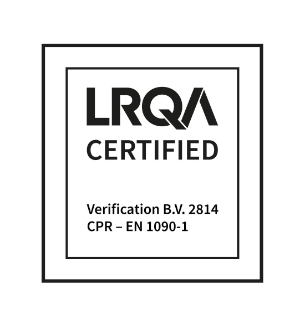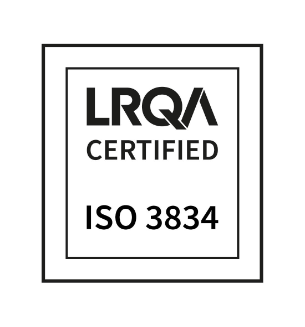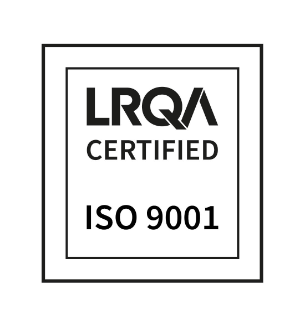Knowledge centre
12. Conserving
This chapter deals with the most commonly used conservation methods.
Pickling/passivation
Achievable roughness 0.5 μm.
Pickling and passivation are the most common ways of treating stainless steel. The aim of this process is the removal of oxides and extraneous metal particles from the surface and the creation of a passive surface layer of good quality. The result of the treatment is an even, matt appearance.
The pickling and passivation happen in a single process. First, the product is treated with a pickling liquid (in an immersion bath or using a pickling paste). The pickling liquid contains components that remove the discolouration caused by the welding and components that create the chrome oxide layer. After that, the pickling agents are sprayed off.
Now that the metal is free of all contaminants, the surface is highly reactive. By exposing the product directly to the air, the material oxidises and a passive surface layer forms – the passivation – that makes the stainless steel stainless again. The chromium oxide layer can actually be affected by machining operations during the production process.
Sanding, brushing, grinding and polishing
Achievable roughness 0.5-5 μm.
These operations, mostly in the form of final processing, are carried out to improve the surface properties of stainless steel and to give the product a more attractive appearance. However, hygiene requirements also play a role in the food and chemical industries.
Choosing a different grain size, machining direction or brush type caninfluence the outcome of the process.
For example, the grain size of the tool used determines the amount of material that is removed during grinding and sanding to eliminate signs of damage.
- Bear in mind that the tool may not be able to reach all areas. In some cases, it is advisable to perform these operations before welding or assembly.
Electrolytic polishing
Achievable roughness 0.2-0.3 μm.
This dissolves a part of the top layer of the material including any contamination. Since the peaks in the material dissolve quicker than the troughs, the process has an smoothing effect. Scratches disappear, causing the surface to shine.
Electrolytic polishing of stainless steel causes the iron in the surface to dissolve quicker than the nickel. Because the quantity of nickel increases proportionately, the stainless steel becomes even more resistant to corrosion.
The difference from mechanical polishing is that the surface is much cleaner and less sensitive to corrosion. Mechanical polishing actually rubs grindings and contamination into the surface. Electrolytically polished material also has a much more even structure, which makes it less susceptible to the nesting of bacteria in the pores.
Thermal galvanising
(galvanising, hot-dip galvanising)
Thermal galvanising forms an alloy layer by immersing the products in a liquid zinc bath at a temperature of 450 oC. A layer of pure zinc adheres to the topmost layer of the steel product. This surface layer is hard-wearing, corrosion-proof over the long term and highly resistant to knocks and scrapes. In the event of damage, the zinc surface restores itself to a certain extent through the cathodic action. Small parts are suspended in the zinc bath inside a drum. When the drum is lifted out of the bath, it is centrifuged to remove any excess zinc.
Advantages:
- Thick (50-150 μm) closed layer.
- Usually no post-treatment required.
- Long-lasting corrosion resistance.
- Good adhesion to the surface.
- Cathodic protection.
- Hollow products are also covered with a layer of zinc internally.
Disadvantages
- Risk of distortion.
- Layer thickness difficult to adjust.
- Post-treatment of screw thread.
- The alloy layer is hard and brittle, so difficult to process afterwards.
- Additional holes for venting and zinc draining.
- Coagulated drips have to be removed by hand after the galvanising process.
- Colour differences in different materials (depending on the silica content).
The corrosion resistance can be further improved by applying a powder coating to the zinc layer, the so-called duplex system.
Blasting
Achievable roughness with glass bead blasting 1.5- 3.0 μm. Achievable roughness with ceramic blasting 0.8-2.0 μm.
The product is ‘bombarded’ with blasting medium, which cleans the surface. Blasting is also used as a finishing treatment. There are dozens of blasting media on the market, ranging from very coarse to very fine, round and sharp-edged, metallic and inert. A distinction is also made between single- use and multi-use media.
The difference between glass bead blasting and ceramic blasting is the blasting medium. In the case of glass bead blasting, the glass particles shatter, which produces a greater roughness than ceramic blasting. For an optimal result, it is a good idea to pickle stainless steel products first to remove any contamination before blasting.
Drumming
Drumming is mainly suited to smaller products. During the process, the edges are broken up, which gives the product a matt appearance. The drum itself contains small stones or other material of a certain hardness.
The end result of this finishing technique depends on the coarseness of the stones.
Electrolytic galvanising
Layers of zinc are primarily used to protect steel. The zinc layer is less refined than the base material and ‘sacrifices itself’ to any corrosion that occurs. The layer thickness is 540 μm. As the layer becomes thicker or the chromium content increases, the corrosion resistance improves. The zinc layer is mostly passivated (chromated or bichromated). The passivating layer not only enhances the appearance of the zinc layer, but also provides additional protection against corrosion.
An advantage of this method is that heat does not cause any distortion.
Powder coating
Powder coating is the application of a synthetic coating containing paint in powder form as the starting material. The powder is melted by heating it to a temperature of at least 180 degrees. The molten powder flows across the product to form a closed coating. Powder coating often replaces wet painting because it doesn’t use any solvents.
Powder coating is suitable for all heat-resistant Disadvantages: materials. The coating is hard and wear-resistant. Powder coating provides protection against corrosion and is weatherproof. In areas with an aggressive climate (e.g. sea, industry or city), a two- layer system is often applied.
There are various ways to apply the powder:
- Powder spraying: pneumatically (on preheated objects) or electrostatically (whereby the product attracts the powder).
- Whirl sintering, whereby heated parts are passed through a bath of swirling powder.
- Flame spraying, whereby powder is melted with a flame and then sprayed on.
Advantages
- No expensive, unhealthy, flammable or explosive solvents needed.
- Less harmful for the environment.
- 100% yield through recovery of lost powder.
- Better edge covering.
- Material costs per m2 are quite low.
Disadvantages:
- Colour setting difficult.
- No fast colour change.
- ‘Orange peel’ appearance.
- Thin layers not possible.
- Repairs with powder not possible.
- The powder adheres poorly if there is an oxide layer on the cut edges.
It is up to the customer to choose whether to powder coat or wet paint the product. However, here are a few tips:
- If opting for wet painting, bear in mind that products mostly have to be blasted in order to be able to spray them well.
- Opt for wet painting if different layers have to be applied to the product.
- Bear in mind that wet painting has a long curing time.
- If opting for powder coating, bear in mind that blank material can be coated immediately after degreasing. This saves expensive and time- wasting pre-treatments.








